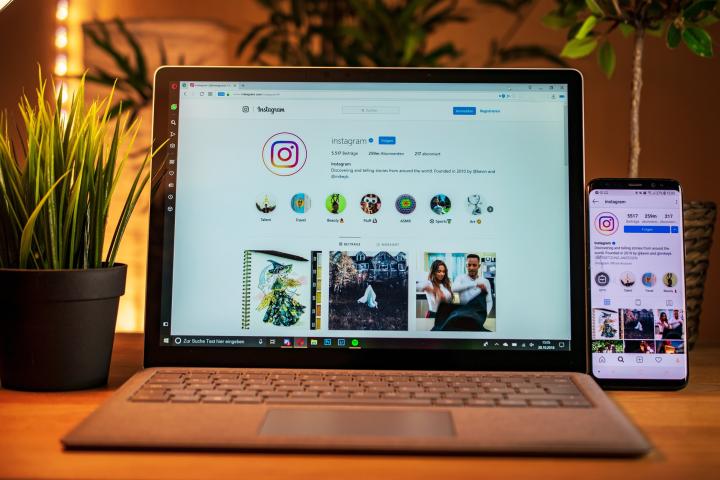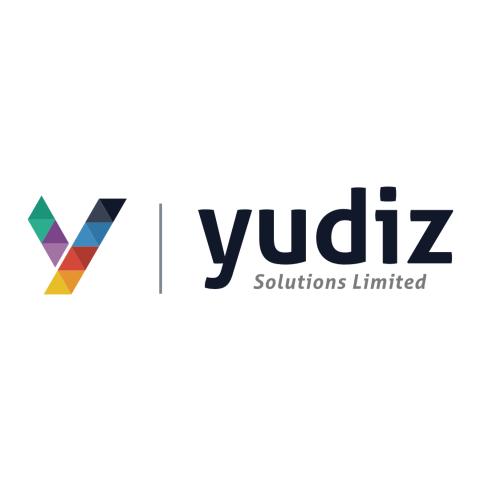Building a POD company from scratch isn’t 100% free. Researching market trends, designing your website, developing products, securing inventory, or renting a warehouse - everything requires costs. And even if you start a clothing business to dropship, you may need initial capital to market your assortment, reach customers via multiple channels, and make your brand recognizable. Understandably, if you haven’t begun selling yet, you may lack sources of cash to replenish your bank account continuously.
A reasonable question is how I can find funding for my business. Nowadays, hundreds or even thousands of governmental and private organizations in the US and globally lend money to small startup ventures and even give it for free for their potentially valuable ideas. This article aims to uncover reliable methods of getting financial support for POD companies and provide some tips on taking the first steps in this lucrative area.
Where To Get Funding in 2024?
What comes first to mind when considering financial support to develop a fashion brand? Perhaps bank credits, with their primarily high annual fees and monthly repayments, risks of deteriorating your credit history and reducing cash flow. Still, there are more beneficial methods to acquire for third-party investments, some of which we’ve shared below.
SBA Loans
One of the easiest ways for fashion designers to find funding is to request help from The Small Business Association (SBA). This organization supports modest companies in building their brands and offers favorable conditions to make dreams come true. Usually, getting SBA loans requires less money down on a project compared to conventional lending variants. Moreover, borrowers have longer terms for paying back their credits, which means they can reserve some funding to produce and distribute the POD clothing line.
Entrepreneurs should check the SBA policy to see whether their firms fulfill all the necessary requirements before applying for a loan. In the next step, business owners should fill out the Lender Match and wait for an email with the list of approved vendors within two days. Then, they can choose a reliable lender and send a direct application to get money for their clothing line.
Venture Capital Investors
You may also consider venture capital investments if looking for funding for a small business startup. These loans differ from traditional ones as your lender will gain partial ownership of the company and take an active role in its further development. You should be ready to share many business strategies and delegate a portion of control over the business to a third party for the financial help you receive.
In most cases, investors deal with high-growth enterprises ready to scale and expand new horizons. There’s no 100% guaranteed method to find venture capital, but these essential steps will help you become closer to your goal:
Crowdfunding
One of the most low-risk ways to get funding for your business is to seek collective financial help. Remarkable websites like Kickstarter or GoFundMe are explicitly designed to connect entrepreneurs and investors. Here, you will enter a vast network of people who offer small amounts of capital to finance other startups.
The main advantage of crowdfunding lies in retaining complete control over your company. Your bankers won’t request a seat at the directors’ table. Neither they’ll oblige you to pay back money if your strategic plan fails.
This method is prevalent among individuals and businesses as it provides access to diverse supporters, allows seekers to grow their audience, and get donations online for starting a clothing print company from scratch.
Grants
Unlike classic loans, which should be paid back sooner or later, grants are awarded one-sidedly. Still, you can’t just apply for fashion investment funds and wait for a deposit. Federal, state, or local authorities allocate finances for stimulating economic growth, enriching communities, implementing innovations, or developing infrastructures. So, you should present a strong business plan outlining exactly why you need money and what it will be used for. Among the great variety of offerings, we’d like to focus on several that may be useful for your custom clothing case.
Women-owned businesses
Some grants for fashion startups focus on women in business, supporting their entrepreneurial activity and contributing to independence and self-realization. For instance, The Cartier Women’s Initiative Regional Awards Program offers a $100000 refund for young and experienced companies working to meet one of 17 Sustainable development goals.
Stacy’s Rise Project is another destination that distributes business funding for women who sell consumer-packaged stuff. If your store earns $25000 - $1 million annually, you can apply for a $25000 grant on scaling and improvement.
Other clothing print shop grants include $10000 - $25000 from Women’s Net, $50000 - $500000 from the Foundation for a Just Society (FJS), and IFundWomen financing for diverse cases.
BIPOC-owned businesses
Black, Indigenous, and other people of color (BIPOC) searching for how to get funding for a clothing POD brand may consider the following options:
Small business grant
Apart from federal government agencies like the SBA, dozens of nonprofit and private organizations offer small business grants for clothing lines and other entrepreneurship.
For example, the StartOut Founders Program supports LGBTQ+-owned companies at every step of their development, from beginners who only brainstorm ideas for their startup to established brands looking for new opportunities to expand their recognition.
The FedEx Small Business Grants Program welcomes enterprises with fewer than 99 employees and six years of industry experience. The total cash pool amounts to $225000.
Small business funding options are offered by a diverse number of organizations, each with a different set of values and missions. In most cases, they are industry-specific, so to find the one suitable for your POD goals, you should research the niche and satisfy eligibility requirements to be qualified for grants.
How To Start a Clothing Brand 2024: step-by-step guide
Starting an online clothing business from the raw idea to launching a successful store and generating profit requires specific skills, creative thinking, passion, and a bit of entrepreneurial savvy. This guide will share how to develop a fashion brand from scratch, including education, production, and promotion. Read about the essential steps you’ll take to reach prosperity and recognition in your work.
Gain fashion design skills
The print on demand industry offers art designers and creators vast opportunities to showcase their talents and reveal exceptional ideas through unique custom apparel. Don’t say you have no predisposition for it or lack creativity for starting your own clothing brand. All you need is a little bit more time and experience to become a professional in what you do.
Let us recommend fast-track but incredibly valuable online fashion design courses from Marc Jacobs or affordable resources at Udemy. They will give you the right direction and support at the beginning of your POD journey. Formal education offers incredible results. You learn the latest industry standards and can predict what may be trendy in the next season. You access valuable resources and make reliable contacts with industry pros. And what is more important is that you gain more confidence to fill a store with your own collection.
Create a business plan
Launching a successful clothing line requires well-thought-out preparation, just like any other enterprise. Thus, you should define the business model for your future store. You may choose a dropshipping option from other printing services, make wholesales, or own the entire production with all its facilities.
Within your strategy, you should also determine the type of your company: will you operate as a solo entrepreneur, build a corporation, or something in between? If you decide to follow sustainable production, you can join the B Corp and receive certification, which is highly appreciated among conscious consumers.
Right from the start, you should also make calculations to understand the costs of starting a clothing line. You may be able to fund it yourself, especially with the dropshipping model. Still, if you plan to produce and stock apparel independently, you must invest in equipment, fabric, shipping materials, website launch, and marketing. Perhaps third-party investments will help to come up with the startup capital.
Build a strong brand identity
Your brand’s influence isn’t limited to just a logo. This concept has a deeper meaning. When you start a clothing business, you should define the company’s values, philosophy, mission, priorities, and target customers. Then, you need to incorporate all this crucial information into every aspect of your activity: brand story, website design, customer communication, your clients’ support, and even packaging.
It’s essential to build the entire lifestyle around your company. Use social media to broadcast how your brand “lives”: share the production and packing processes, make video presentations of your ready products or fabric options, create stories of how your organization was born, or join the viral online challenges. The key to social media attention is consistency. It’s worth making posts every day to keep subscribers engaged. But your content should be diverse and relative at the same time.
Design clothes and choose the right fabric
Find your own unique style and reflect it in print on demand items. You may use top Etsy clothing examples for inspiration. Add mockups to your online store to help buyers visualize your illustrations on the product before they press the “purchase” button. Watching the latest fashion trends while creating your designs is extremely important. You can still be dedicated to the brand line and bring fresh ideas to keep up with the times. While you may want to add seasonal updates to your catalog, think of evergreen items as well. The first ones cause 3-6 months of orders booming and then become irrelevant. However, prints that work regardless of the season should stay in your collection for years.
Pay close attention to the fabric you use for custom apparel. Poor quality can “eat” colors and vibrance, so the final result of the POD item will differ from those showcased in online listings. If the budget allows, you may order premium garments abroad to make your assortment stand out among local offerings. When you start a clothing line with no money and are working with a dropshipping supplier, always order samples to ensure your customers will get qualitative goods that will leave positive impressions about your brand.
Set up production
Let’s figure out what challenges you may face when starting clothing brand production. If you redirect orders to a third-party printing service, you partially lose control over the process. First, you don’t see the final result before every shipping and can’t guarantee the quality of your POD item. The best thing you should do to ensure your partner doesn’t negatively impact your reputation is to inspect their craftsmanship (and repeat it periodically). If the supplier’s location doesn’t allow you to do it in person, order printed samples, as we’ve mentioned earlier.
The second case is when you keep the production in-house. In the early days, you can cope with the ordered volume independently. But as your POD company grows, you may be required to hire and educate additional staff or outsource a part of the work to a similar service.
Create an online store
One of the easiest and hassle-free ways to start a clothing line business is by launching an online shop at Shopify. Its built-in website templates allow brands to create and customize pages to their liking. You may choose a free or paid theme that prioritizes photos and add a unique touch with your logo, colors, and other personal details.
Your clothing store should have several standard pages that visitors may search for. These are About Us, Contacts, Products, Collections, Return Policy, and FAQ. Incorporate your brand’s values and aesthetics on the main page. Thus, they will become apparent from the get-go and help build trust and a solid connection between the POD company and customers.
Don’t underestimate the power of qualitative photoes. Invest in professional photographers who will make outstanding pictures of your items, capturing essential details like texture, closure, and trims. You may use a lighting kit and even a smartphone for a smaller budget.
Develop pricing and inventory strategies
Is starting a clothing line worth it? It may definitely be if you establish competitive pricing for custom goods and gain profit. Consider the fixed and varied costs required to produce, promote, pack, and deliver them to the final destination. Research the market to determine how much your potential customers are willing to pay for a similar product. Your prices may be higher than rivals offer. Still, in this case, the item should bring additional value to the consumer or solve pain points other brands can’t.
If you keep fabric and ready-made goods at home or in warehouses, organize a safe place protected from direct sunlight and moisture. Analyze your business data to prevent overstocking. Although garments don’t spoil as quickly as food, trends may become outdated, so you risk wasting money on illiquid. This challenge can be eliminated in the dropshipping business model, where prints are made only after the customer pays for the order.
Market your store
Promoting your online shop is one of the final steps to starting a clothing brand. Regardless of your business model and initial capital, you should make news about your company's appearance available to as many people as possible. Driving sales remains the main challenge for entrepreneurs of any size. But even with a small budget, there are multiple ways to make your fashion line recognizable on the market:
Now, you know how to start a clothing line via an e-commerce platform. As your business grows, you may think of opening a land-based retail store. Your sales may increase significantly with a loyal customer base and good promotion. Of course, you should prepare to handle online and offline work simultaneously. A couple of additional hands and automated software can help you streamline the process perfectly...




